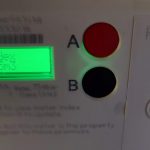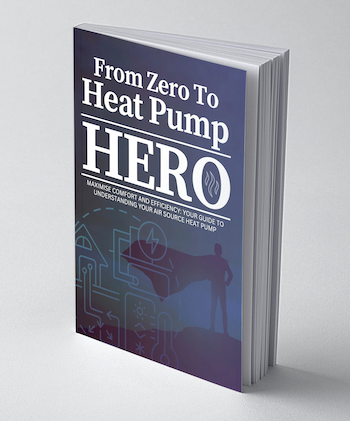Posted by: @sandSorrry forgot to ask re rads would aluminium or cast iron rads work with ashp low flow as long as they were K3. Do they even do K3 cast iron.
Aluminium has a thermal conductivity about 5 times better than cast iron or steel I think, there are reasons that it’s used for heatsinking electronics. You can get aluminium rads, but I would expect that they would be hugely expensive. I assume that you are thinking about those designer cast iron column radiators, from what I’ve seen, these tend to come in 1, 2, 3 or more vertical columns stacked to different lengths. Again, you can compare the heat output for different physical sizes. One thing I noticed when looking at designer radiators recently, was that the heat output was considerably lower than a similar size standard radiator. This is probably because they are designed to look good at the expense of efficiency. It’s about the surface area in contact with the air flow for convection, the standard rads have the corrugated fins between the panels, increasing surface area.
Posted by: @morganwhich of those two links do you suggest I don’t need?
You don't need either.
To use weather compensation you just need to set the FTC to curve mode and set your initial curve settings.
This will manage the flow temp in relation to the outside ambient temp.
If you are wanting the heating on 24/7 you need to set your Neo thermostat to something high, like 25ºC so it is always calling for heat.
Or if you want the heating off overnight, set a low temp for that period on the Neo.
@Derek-m was very helpful in going through the setup over Skype. Perhaps he would do the same for you if required.
Posted by: @markcPosted by: @morganIs it safe to assume that if the FTC is in the same cupboard as the cylinder etc (common instal procedure) that, like the garage scenario, auto adaptation is not an option?
It appears to be the common practice yes.
For Mitsubishi ASHPs, if you want to use auto adaptation the options are:
1. Move the FTC controller
2. Wire in an additional thermistor and locate that in the room/hallway.
3. Add an additional, wireless FTC controller and local that in the room/hallway.I think the current opinion is that using auto adaptation instead of weather compensation only won't give massive economic savings, but it will help to maintain a more comfortable internal temperature.
Not familiar with the FTC6, just trying to learn about the control systems, I’ll have to read the data sheet and more about weather compensation and auto adaptation.
From a control systems point of view, I would have expected auto adaptation to be a better solution as it’s all closed loop with more information available. Given my current understanding, weather compensation looks more open loop, with lots of tweaking to get a reasonable profile, which might make it suboptimal under certain conditions. Derek M will probably now put me straight.
That isn’t what Brendon reckons. If you remember he would remove the Heatmiser thermostat and replace with the Mitsubishi units as it’s a temp’ sensor as opposed to an “on/off switch”. Hence my desire to switch. He is scathing of ‘thermostats’.
Retrofitted 11.2kw Mitsubishi Ecodan to new radiators commissioned November 2021.
Posted by: @rustyPosted by: @markcPosted by: @morganIs it safe to assume that if the FTC is in the same cupboard as the cylinder etc (common instal procedure) that, like the garage scenario, auto adaptation is not an option?
It appears to be the common practice yes.
For Mitsubishi ASHPs, if you want to use auto adaptation the options are:
1. Move the FTC controller
2. Wire in an additional thermistor and locate that in the room/hallway.
3. Add an additional, wireless FTC controller and local that in the room/hallway.I think the current opinion is that using auto adaptation instead of weather compensation only won't give massive economic savings, but it will help to maintain a more comfortable internal temperature.
Not familiar with the FTC6, just trying to learn about the control systems, I’ll have to read the data sheet and more about weather compensation and auto adaptation.
From a control systems point of view, I would have expected auto adaptation to be a better solution as it’s all closed loop with more information available. Given my current understanding, weather compensation looks more open loop, with lots of tweaking to get a reasonable profile, which might make it suboptimal under certain conditions. Derek M will probably now put me straight.
It is becoming apparent that weather compensation being a slope and not a curve does have its issues.
e.g. with my current slope I get 30ºC flow when the outside temp is 5ºC. This gives me a constant 22ºC room temp downstairs.
When the outside temp is 10ºC the same slope generates 25ºC flow which only gives a 21ºC room temp.
It is possible to tweak the curve settings to cater for these 2 outside temps, but I imagine as the weather gets colder the settings will need to be adjusted manually.
Posted by: @morganThat isn’t what Brendon reckons. If you remember he would remove the Heatmiser thermostat and replace with the Mitsubishi units as it’s a temp’ sensor as opposed to an “on/off switch”. Hence my desire to switch. He is scathing of ‘thermostats’.
Yes but if you are only using weather compensation you don't need any internal thermostats or thermistors. (apart from using them to tell you what the room temp currently is).
Posted by: @rustyPosted by: @markcPosted by: @morganIs it safe to assume that if the FTC is in the same cupboard as the cylinder etc (common instal procedure) that, like the garage scenario, auto adaptation is not an option?
It appears to be the common practice yes.
For Mitsubishi ASHPs, if you want to use auto adaptation the options are:
1. Move the FTC controller
2. Wire in an additional thermistor and locate that in the room/hallway.
3. Add an additional, wireless FTC controller and local that in the room/hallway.I think the current opinion is that using auto adaptation instead of weather compensation only won't give massive economic savings, but it will help to maintain a more comfortable internal temperature.
Not familiar with the FTC6, just trying to learn about the control systems, I’ll have to read the data sheet and more about weather compensation and auto adaptation.
From a control systems point of view, I would have expected auto adaptation to be a better solution as it’s all closed loop with more information available. Given my current understanding, weather compensation looks more open loop, with lots of tweaking to get a reasonable profile, which might make it suboptimal under certain conditions. Derek M will probably now put me straight.
I think that you are perfectly correct Rusty, Auto Adaptation is indeed closed loop control, whereas weather compensation is open loop control, though it does appear to work reasonably well, particularly in homes that have a large thermal mass.
Posted by: @morganThat isn’t what Brendon reckons. If you remember he would remove the Heatmiser thermostat and replace with the Mitsubishi units as it’s a temp’ sensor as opposed to an “on/off switch”. Hence my desire to switch. He is scathing of ‘thermostats’.
Hi Morgan,
Your question was 'which of the two items that you are purchasing, will you not need to be able to use weather compensation control', and the answer is (as MarkC pointed out) that you don't need either of those devices. You can set weather compensation on your FTC controller whether it is in your room, your airing cupboard, or even your garage, the location does not matter, because it is measuring the outdoor air temperature using a sensor that is already installed in the outdoor unit.
I fully agree with Brendon, that thermostats should be avoided whenever possible.
Hi Derek and Mark.
I get that but I might not always run via weather compensation so when running via other means my preference is to dispose of the neostat altogether and have all in house Mitsubishi controls and remove the thermostat out of the equation.
Retrofitted 11.2kw Mitsubishi Ecodan to new radiators commissioned November 2021.
- 25 Forums
- 1,513 Topics
- 31.8 K Posts
- 23 Online
- 1,283 Members
Join Us!
Latest Posts
-
RE: Additional Battery v Wind Turbine v Ripple
I should add, being an investment, the value of your in...
By Old_Scientist , 3 hours ago
-
RE: Ecodan - flow rates, sensors, settings
Achieving an accurate flow measurement is probably the ...
By Derek M , 7 hours ago
-
RE: Ecodan ASHP - How to optimise my set up?
Again, thank you for another thorough post, @derek-m - ...
By rhh2348 , 9 hours ago
-
RE: Delivering a smart and secure electricity system: government consultation
@Transparent.Now that I am represented by a new MP I th...
By IanMK13 , 11 hours ago
-
RE: Vaillant aroTHERM plus not level or flat - what base is best under an external unit?
Similar thread here
By Johnmo , 12 hours ago
-
RE: VDI 2035 heating water specification
Been looking and it seems a good little project. Ever...
By Johnmo , 1 day ago
-
RE: Do I accept an ASHP and Solar Panel retrofit under the HUG 2 scheme?
Will do. I'm currently waiting for another survey / vis...
By dssr , 2 days ago
-
The company that did the borehole were expecting us to ...
By Johnmo , 2 days ago
-

-

RE: The Misquote That Ruined the Heating Industry
@abernyte manufacturer training is pretty average. They...
By Mars , 2 days ago
-
-
RE: ECO4 Scheme and EPC ratings
@mellow Thanks. Given there is a scheme requirement to ...
By Old_Scientist , 3 days ago
-
RE: Do I just go with the lowest quote for my heat pump?
@jancold To me its a no-brainer then, a max 40C flow te...
By bontwoody , 3 days ago
-

-

RE: Heat Pump Books Beginners – Bodge Buster & From Zero To Heat Pump Hero
@editor Presumably he had some good weather Compensatio...
By Toodles , 4 days ago
-
RE: New Vaillant 7kW aroTherm ASHP or oil boiler dilemma/decision??
Storage capacity really is dependent on storage tempera...
By Johnmo , 4 days ago
-
RE: HP Cycling, Expected or Undesirable
Just a little update. I ordered a longer shielded twin ...
By bontwoody , 4 days ago
-
RE: Domestic hot water timer doing crazy things on my Grant Aerona3 10kW air source heat pump
Thanks @allyfish for the pics and info. Spoke to the in...
By Mellow , 4 days ago
-
RE: Aira Heat Pump: Stylish Scandinavian Heating
It's been a busy day for calls and emails from Aira. I ...
By MikeH , 4 days ago
-

RE: Heat Pump Servicing & Maintenance – Good Value or Rip-Off?
Hmm. A bit of a nuanced answer, methinks. As I've alr...
By Majordennisbloodnok , 4 days ago
Latest Topics
-
Ecodan - flow rates, sensors, settings
By rhh2348 10 hours ago
-
Replacing mains water with well water
By Johnmo 2 days ago
-
Additional Battery v Wind Turbine v Ripple
By bontwoody 2 days ago
-

By jamespipe 3 days ago
-
VDI 2035 heating water specification
By Johnmo 3 days ago
-

Do I just go with the lowest quote for my heat pump?
By Jancold 5 days ago
-
The Misquote That Ruined the Heating Industry
By Alec Morrow 5 days ago
-
Battery Storage Wiring Gauge Question
By Puff 6 days ago
Members Online
No online members at the moment






